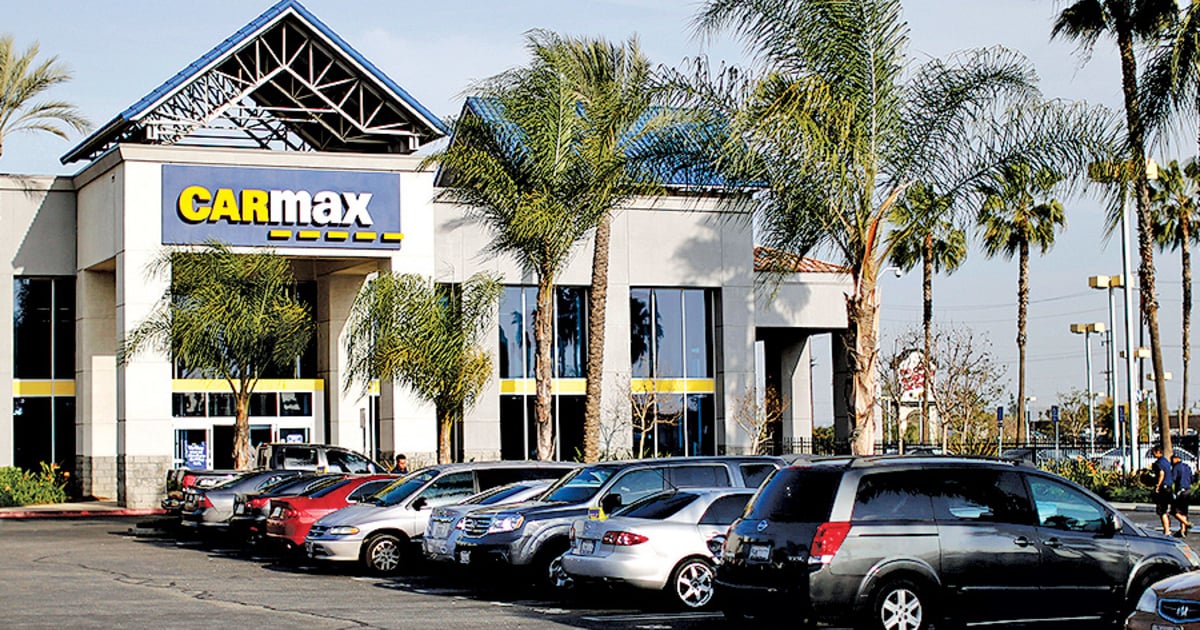
In the wake of a quarter in which CarMax kept per-vehicle profits steady despite widespread affordability and economic concerns, the used-vehicle giant is pledging to focus on improving both its efficiency and customers’ and employees’ experiences.
CarMax executives said this week that the retailer continued trimming costs in its fiscal fourth quarter that ended Feb. 28, a period in which persisting vehicle affordability challenges amid increased interest rates, tightened lending standards and shrunken consumer confidence dinged sales. But even though the company’s retail sales tumbled 13 percent to 169,884 vehicles compared with the same period a year earlier, CarMax took in gross profit of $2,277 per used vehicle it retailed, up $82 from the year-ago period.
The profit preservation came at the expense of volume. CarMax CEO Bill Nash noted that external title data showed market share gains the retailer made in the first half of its fiscal year were offset by share losses in the second half. But that trade-off was deliberate, and Nash said prioritizing per-vehicle profitability over near-term market share was the right play.
“On the retail side, we did expansive price elasticity testing and determined that we could have sold a few more cars, but we actually would have made less money,” Nash said during a call with analysts.
Daniel Imbro, an equity research analyst for Stephens Inc., said running price sensitivity tests helped CarMax conclude it was better to sell vehicles at a higher price than issue discounts in hopes of closing more sales.
“Taking an extra $100 off may not help sell more units, so they drive more gross profit dollars by capturing more margin on each unit they sell,” Imbro told Automotive News.
Still, CarMax’s fourth-quarter net income and revenue fell sharply from the year-earlier period amid prolonged macroeconomic headwinds.
CarMax’s cost cutting continued and included measures to better align marketing spend to sales.
The company also reduced staffing levels through attrition in its stores and customer experience centers — measures it also reported taking in its third quarter — and limited hiring and the use of contractors in its corporate offices, CFO Enrique Mayor-Mora said during the call. A lower corporate bonus accrual also contributed to CarMax’s decrease in overall expenses in the quarter.
Sharon Zackfia, a research analyst for William Blair, wrote in a research note this week that CarMax’s curtailed expenses, plus a lower tax rate in the quarter, more than offset weaker-than-expected sales and income from CarMax Auto Finance, the retailer’s captive finance unit. Income from that unit tumbled 36 percent to $123.9 million.
And CarMax executives said they will continue to look for ways to save.
“As business returns, we’re heavily focused on finding efficiencies,” Nash said.
CarMax also will focus on initiatives to “improve experiences for our associates and customers,” Nash said.
Examples he provided included leveraging data science, automation and artificial intelligence to make it easier for customers to complete key steps in a transaction on their own. CarMax also is building digital tools to help support customers as they shop and buy, and the tools are expected to drive the retailer’s online sales and make it easier for customers to choose the company’s express pickup option, he said.
That option “offers customers the ability to complete their transaction at one of our stores in as little as 30 minutes and represents a win-win opportunity,” Nash said. “Our research shows that customers love this experience when utilized, and it will enable us to lower cost over time.”
New initiatives on the wholesale side of CarMax’s business include artificial intelligence-enhanced condition reports and proxy bidding capabilities, Nash said.
About 14 percent of CarMax’s retail vehicle sales in the quarter were online, up 3 percent from the year-earlier period; 52 percent of retail vehicle sales were omnichannel, down 3 percent. Omnichannel refers to technology and processes aimed at providing a seamless buying experience for consumers whether they shop online, in-store or both.
CarMax bought 262,000 vehicles from consumers and dealers in its fourth quarter. It said 247,000 of those vehicles were purchased from consumers, down 24 percent year over year. The remaining 15,000 were sourced through dealers, up 4 percent.
The company opened five new retail locations in its fourth quarter: Chicago; Indianapolis; Asheville, N.C.; College Station, Texas; and Amarillo, Texas. CarMax operated 240 stores as of Feb. 28. It plans to open five more locations in fiscal year 2024, including two more in the New York City metropolitan market and its first off-site production facility near Atlanta, Mayor-Mora said.
The plans for continued expansion underscored an optimistic outlook given by Nash despite the used-vehicle market’s recent headwinds.
“Over our nearly 30-year history, we’ve navigated many challenging environments and have emerged stronger each time,” Nash said. “This environment is no different, and I’m confident that the actions we are taking will enable us to drive robust growth as the market improves.”

